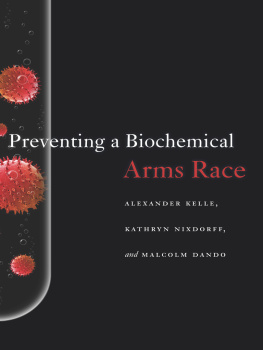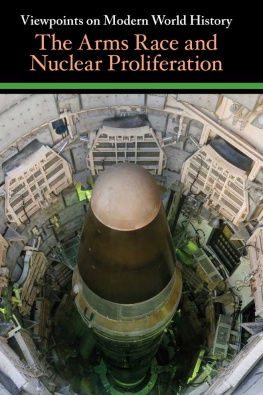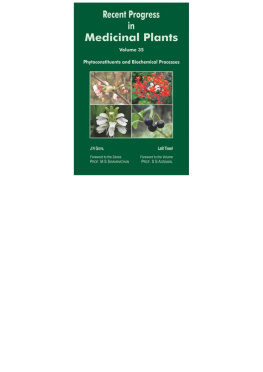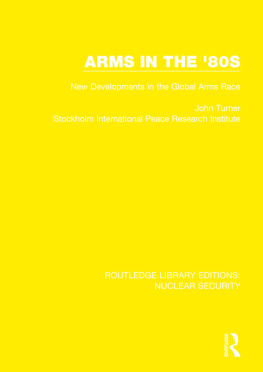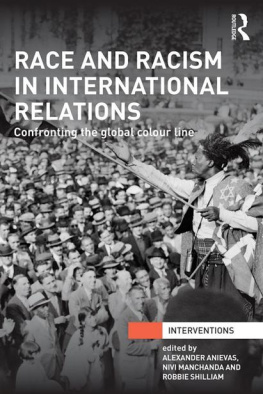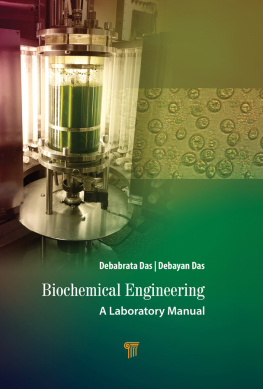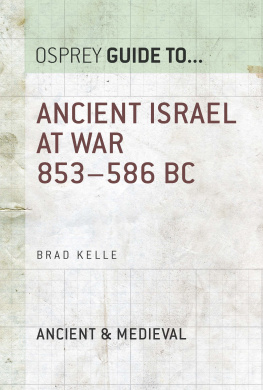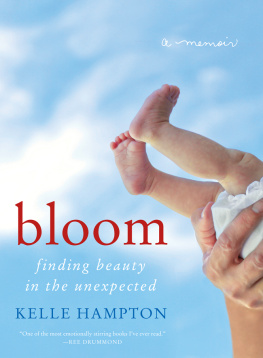Stanford University Press
Stanford, California
2012 by the Board of Trustees of the Leland Stanford Junior University.
All rights reserved.
The authors gratefully acknowledge the support of this work by the German Foundation for Peace Research (Deutsche Stiftung Friedensforschung, DSF).
No part of this book may be reproduced or transmitted in any form or by any means, electronic or mechanical, including photocopying and recording, or in any information storage or retrieval system without the prior written permission of Stanford University Press.
Special discounts for bulk quantities of Stanford Security Series are available to corporations, professional associations, and other organizations. For details and discount information, contact the special sales department of Stanford University Press. Tel: (650) 7361782, Fax: (650) 7361784
Printed in the United States of America on acid-free, archival-quality paper.
Library of Congress Cataloging-in-Publication Data
Kelle, Alexander, author.
Preventing a biochemical arms race / Alexander Kelle, Kathryn Nixdorff, and Malcolm Dando.
pages cm
Includes bibliographical references and index.
ISBN 978-0-8047-8275-3 (cloth : alk. paper)
ISBN 978-0-8047-8615-7 (e-book)
1. Chemical arms control. 2. Biological arms control. I. Nixdorff, Kathryn, author. II. Dando, Malcolm, author. III. Title.
JZ5830.K46 2012
327.1745dc23
2012005965
PRE VENTING A BIOCHEMICAL ARMS RACE
Alexander Kelle, Kathryn Nixdorff, and Malcolm Dando
Stanford Security Studies
An Imprint of Stanford University Press
Stanford, California
1
Arms Dynamics, the Changing Threat Environment, and the Chemical and Biological Weapons Prohibition Regimes
Introduction
The development and application of military technology over time has taken many different forms. In the area of chemical and biological weapons (CBW), this has manifested itself in the deliberate spread of disease in premodern siege warfare (Wheelis 1999a, 1016) and the large-scale deployment of chemical warfare agents during World War I enabled partially by the industrial revolution (Robinson 1998; SIPRI 1971a; Martinetz 1995). With the advent of the information age and the dawning of the biotech century, questions about the relationship between military or dual-use technologies, and the political motives of state and substate actors, arise anew. These questions are especially pertinent because of wider changes in the nature of warfare (discussed in below).
However, these risks are in principle dealt with by the prohibition regimes that were set up in the late 1960s/early 1970s (for biological weapons [BW]) and late 1980s/early 1990s (for chemical weapons [CW]) in order to address the threat stemming from these weapons. The multilateral regimes thus created and revolving around the 1972 Biological and Toxin Weapons Convention (BWC) and the 1993 Chemical Weapons Convention (CWC), respectively, were unambiguously products of their time. Both Conventions reflected (1) an international consensus on the prohibition of, inter alia, the development, production, and use of CBW; (2) the depth of the provisions contained in the two legal instrumentsquite shallow in case of the BWC and considerably more intrusive in the CWC; and (3) the requirements for an international organization to oversee implementation of the treaty provisions by states partiesnone in the BWC and a 500-staff strong Organisation for the Prohibition of Chemical Weapons (OPCW) for the CWC. The underlying consensus on these issues was in turn informed by the state of the art in military technologies, the historical experience of state programs, and the use of CBW over the course of the twentieth century and resultant assessment of the usefulness of continuing to pursue or prohibit biological and chemical weapons, respectively. It is thus useful to reconsider the reasoning on arms dynamics and arms control approaches prevalent at the time as well as their application to CBW.
Following Buzan and Herring (1998) we reject a simple dichotomy of arms racing and non-arms racing and instead apply their concept of a continuum of an arms dynamic (ibid., 79). They use the latter term to refer to the entire set of pressures that make actors (usually states) both acquire armed forces and change the quantity and quality of the armed forces they already possess (ibid.). Buzan and Herring continue to explain that arms racing is reserved for the most extreme manifestations of the arms dynamic, when actors are going flat out or almost flat out in major competitive investments in military capability (ibid., 80). Maintenance of the military status quo in this logic is located at the other end of the spectrum of the arms dynamic. In between the two, the concept of an arms competition is located. None of these are immutable states of affairs. Rather, individual policies and relationships between actors can move across this spectrum through arms build-ups or arms build-downs.
Applied to the CBW issue area during the first half of the Cold War for BW and practically all of the Cold Wars duration for CW, the numerous BW and CW state-level programs attest to the presence of an arms competition between East and West in this area too. In the biological field, such programs in the United States, the United Kingdom, and other countries up until the late 1960s (van Courtland Moon 2006; Balmer 2006; Lepick 2006; Hart 2006; Pearson 2006) were terminated when under U.S. and Soviet leadership the BWC was negotiated. This multilaterally agreed-upon arms build-down became possible due to several factors: the advent of the nuclear age with a concomitant interest and partial successes in (nuclear) arms control during the 1960s, the Soviet Unions willingness to separate BW and CW negotiations, the limited tactical utility of BW from the perspective of the Nixon administration in the United States, the emergence of a nongovernmental champion of discussions on the prohibition of CBW (in the form of the Pugwash movement), and difficulties in implementing those provisions of the Brussels Treaty of 1954 that prohibited Germany from acquiring inter alia BW (Tucker 2002; Guillemin 2005; Chevrier 2006).
Success in negotiations on BW came at the expense of putting a build-down in the CW area on the back burner. Completion of negotiations for the CWC took another two decades until this treaty was opened for signature in January 1993. This does not come as a complete surprise given the degree to which already in the latter stages of World War I CW were being integrated into the prevailing doctrine, organisation and day-to-day routines of armed forces. They were now... caught up in that process of assimilation which is discernible in the history of most technologies, civil as well as military (Robinson 1989, 112). Robinson points out that despite the nonuse of CW during World War II, three major technological changesthe discovery of nerve gases, the advent of aerobiology, and the discovery of antiplant CW agentsresulted in significant institutional consequences insofar as they led to the survival of chemical warfare bureaux... within military bureaucracies (ibid., 116). These, in turn, have shaped the situation of chemical warfare in the 1980s (ibid.). This situation was characterized by a renewed interest in CW as a deterrent of offensive CW use by the Soviet Union and its allies. In the context of the general arms build-up under the Reagan administration in the first half of the 1980s, plans to develop and produce binary chemical weapons were revived in the United States (Adams 1990, 152ff.). In addition to the binary CW program, in 1986 the Pentagon requested a further $12 million to begin research on novel lethal and incapacitating compounds, and was reported to be developing a master plan for future development of retaliatory systems to incorporate greater range, accuracy and stand-off capabilities (ibid., 165).

